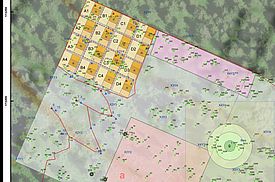The long-term forest ecosystem research project (LWF) records around 70 million measured values per year - and has done so for many years. Such a wealth of data requires a sophisticated data management, on the one hand to document the environmental data for future generations and make them accessible (see Federal Act on Archiving), on the other hand to avoid a possible data loss. The cost of such losses would be simply unaffordable as the information can no longer be collected.
In addition, all measured objects, such as the trees, are measured on the LWF sites, i.e., their exact location is recorded since their measured values are only representative of their location.
Remote sensing is becoming increasingly relevant for spatial analyses, research questions on spatial distribution patterns and studies on the function and physiology of trees. However, analyses are carried out with satellite data and aerial photographs at forest stand level and increasingly also with drone-supported systems. They have become much more significant thanks to the latest technological developments (airborne LIDAR, hyperspectral sensors).
All data are stored in a geodatabase. A Geographical Information System (GIS) that performs spatial analysis and maps production accesses these data directly. This ensures that all GIS products are based on the same database and thus deliver consistent results.
R is increasingly used in the natural sciences because statistical tests are part of scientific work. This software package is used for queries, statistics and even graphics and also accesses the geodatabase directly.
Facts and figures about LWF data management ¶
- 1994: initial measurements
- 12 permanent measurement series
- 18 long-term observation sites
- 30 measuring stations (under forest cover and in open field) with live data display
- 2 sites with connection to Eddy Flux towers from NABEL and ETHZ
- Over 6 million measured values per year, in minute to hourly intervals
- 5,000 to 19,000 observed trees, per year, depending on the sampling protocol
- 3,500 chemical analyses per year
